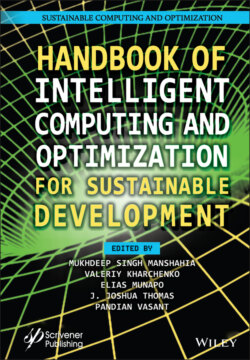Читать книгу Handbook of Intelligent Computing and Optimization for Sustainable Development - Группа авторов - Страница 243
6.5.6 Cases of Simulation
ОглавлениеNow, there are three conditions or cases. First two cases in which sender and receiver are outbound and third case is wen sender and receiver is inbound. But for third case, there are four scenarios.
1 1. Scenario with no error.
2 2. Scenario with error.
3 3. Scenario with path hoping.
4 4. Scenario with errors and correction.
But, here we will discuss three cases of scenario without and with errors and with errors and correction.
a. Case without errorsIn scenario without errors, we will first transfer the information of sender and reliever nodes. Now, check the range and distance between the nodes. Next step is to generate the blinking line and check the set of nodes (faulty nodes) and then send the information to the destination with the help of coordinates of x and y. In this figure, sender 21 is sending packet to the receiver through the minimum path and time delay. It passes through 3 nodes (72, 54, 65).
b. Case with errorIn scenario with error, loop will run until the coordinate 1 is equal to the coordinate of receiver. After reaching at the receiver node, now find the coordinate 2 from the valid group of nodes (avoid faulty node). In this figure, 72 is faulty node and it stops the procedure but again scenario will generate another loop to reach at the receiver node. This time they avoid 72 and pass through 52, 54, and 57 or 45, 26, and 57. It is shorter path than the without errors.
c. Case with error detection and correctionThird scenario is with errors and correction. This is proposed scenario in which we will simulate the loop with errors and then correct the errors to find out the best way to reach at the destination node. To correct the errors, we will change the way/nodes that are faulty in the whole scenario and choose another node for the receiver node. The simulation of such scenario is shown in figure. It will pass through.
